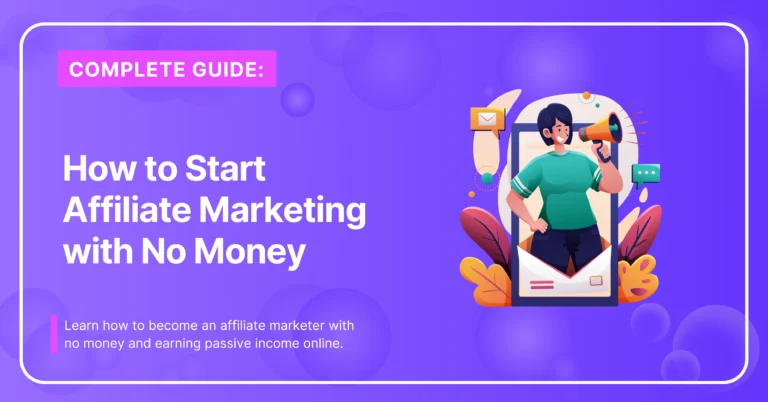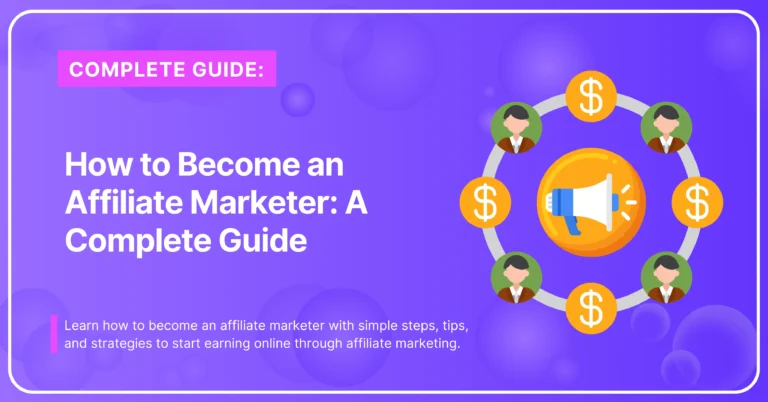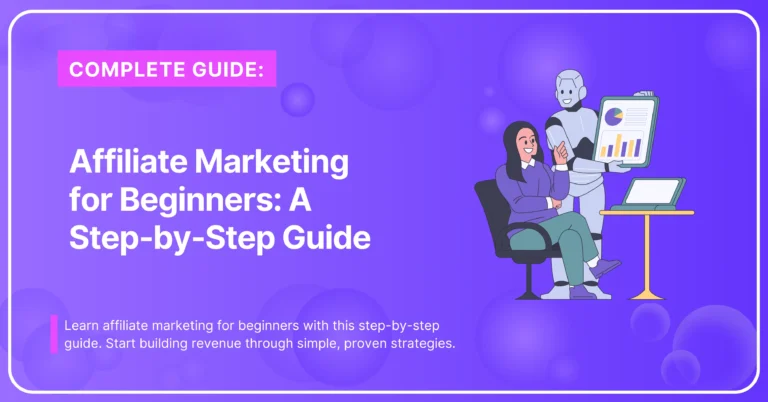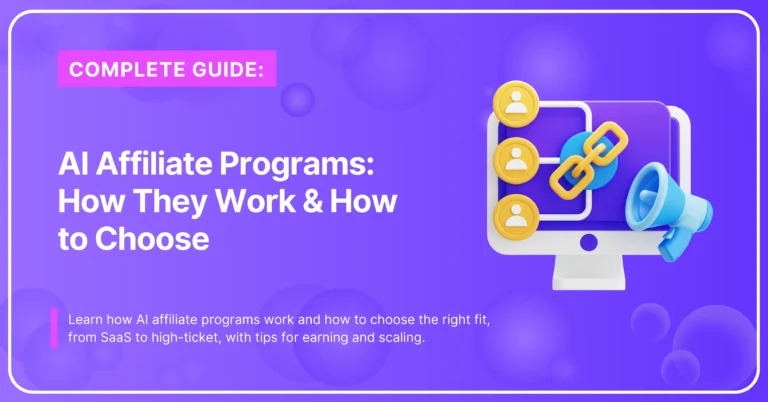Let’s be real, AI for affiliate marketing in 2025 isn’t just about finding the right product and crossing your fingers. Privacy rules are tightening, third-party cookies are on life support, and competition is fiercer than ever.”

Make Money With AI
Join our Partner Programs!
Boost your reputation, drive revenue and grow your business with CustomGPT.ai.
But here’s the good news: AI isn’t just a helpful sidekick anymore — it’s the operating system of affiliate marketing.
The people winning right now are using AI tools for affiliate marketing to predict buyer intent before it happens, personalize campaigns without losing the human touch, and attribute sales accurately without guesswork.
And the best part? These aren’t far-off, futuristic ideas. You can start applying them today. Here are 10 AI hacks that will help you work smarter, move faster, and earn more — without burning out.
Why AI for Affiliate Marketing Is Non-Negotiable in 2025
A few years ago, “using AI” in marketing was a novelty. Now, it’s table stakes. The majority of marketers already lean on AI daily, from writing optimized content to tracking results, and that number’s only going up.
The real question isn’t if you’re using AI, but how well you’re using it. The top performers are weaving AI into every part of the funnel — from the first blog headline to the last post-sale email — to deliver faster execution, deeper insights, and hyper-personalized automation.
Personalization is especially powerful. Brands connecting first-party data to AI-driven experiences see significantly better ROI. If you’re not doing it yet, you’re leaving money (and market share) on the table.
1. Automate Repetitive Tasks to Save Hours Every Week
Repetitive admin is a silent profit-killer. Things like content scheduling, link tagging, UTM tracking, and pulling performance reports can easily eat hours you should be spending on growth.
AI tools fix:
Use automation tools to handle the grunt work. Set up systems that:
- Auto-tag your affiliate links and pull results into one dashboard
- Summarize weekly performance so you review only the exceptions, not every data row
- Apply budget caps and exclusions so campaigns stay profitable even when scaling
Freeing up even 5–10 hours a week gives you more time to focus on high-impact strategy.
2. Speed Up Content Creation Without Sacrificing Quality
Content still drives most affiliate sales, but creating it takes time. Over half of marketers report using AI to optimize or create content. AI can help you get there faster without sounding robotic.
AI tools fix:
- Use AI to generate outlines, headlines, and first drafts.
- Keep a human-in-the-loop to inject your voice, verify claims, and maintain compliance.
- Build prompt templates and editorial checklists so every piece stays on-brand.
The goal isn’t to replace your creativity — it’s to give you a head start so you can publish more without burning out.
3. Personalize User Journeys at Scale
Generic funnels are dead and personalization is the key. People expect content and offers that feel like they were designed just for them.
AI tools fix:
- Map the key intent stages (research → compare → buy).
- Match calls-to-action, page modules, and offers to each stage.
- Connect your first-party data to a central platform so email, site, and ads all speak the same language.
When your user sees the right message at the right moment, conversions go up — and loyalty follows.
4. Predict What Will Convert Before You Launch
Instead of guessing which content will hit, let AI do the homework for you.
AI tools fix:
- Use AI to score content ideas, placements, and offers based on historical performance and current trends.
- Prioritize the ones with the highest projected ROI.
- Feed post-launch results back into your model so it gets smarter over time.
This approach keeps you from wasting energy on ideas that won’t move the needle.
5. A/B Test Smarter — Not Just More
Traditional A/B testing works, but it’s slow. AI-powered multi-armed bandit (MAB) testing speeds up the process by automatically sending more traffic to the winning variation.
AI tools fix:
- Use MAB for creative elements like headlines and ad hooks.
- Keep standard A/B tests for big, high-stakes decisions like pricing.
- Define success metrics upfront — optimizing for profit, not just clicks.
This lets you find winners faster and avoid wasting budget on underperformers.
6. Create High-Converting Copy in Minutes
The right words can make or break a sale — and AI can help you write more of them, faster.
AI tools fix:
- Prompt AI to create 10–20 variations of CTAs, headlines, and product descriptions.
- Use testing tools to quickly identify the top performers.
- Bake in tone and brand safety rules so every variation is on-message.
When you can test more ideas in less time, you find what works — and you scale it.
7. Optimize for AI Search (Not Just Google)
Voice assistants and AI search tools are changing how people find content. These platforms love clear, concise, structured answers.
AI tools fix:
- Add Q&A sections to your pages that answer sub-questions in one or two sentences.
- Use structured data (FAQ, HowTo, Product) to qualify for richer results.
- Write for humans first, but format for AI parsing.
Think less about “keyword stuffing” and more about “directly answering the question better than anyone else.”
8. Make Data-Driven Decisions Instantly
The faster you react to data, the more money you keep in your pocket.
AI tools fix:
- Set up real-time monitoring for key ratios like click-to-cart, cart-to-purchase, and refund rates.
- Trigger alerts when something spikes or drops.
- Keep a quick-response playbook so you can act immediately.
Small shifts in metrics can signal big opportunities — or warn you before losses pile up.
9. Turn Audience Behavior into Automated Action
Behavior-triggered campaigns outperform generic blasts because they hit when intent is highest.
AI tools fix:
- Send cart abandonment reminders, follow-up comparisons, or price-drop alerts based on user actions.
- Make sure the journey continues after the click — if someone visited a “compare products” page, send them a tailored follow-up, not a generic promo.
This turns browsing into buying without extra manual work.
10. Future-Proof Your Strategy
AI will keep evolving. The trick is staying flexible, keeping your data clean, and never letting automation erase your human edge.
AI fix:
- Document your AI use cases, guardrails, and review processes.
- Train your team regularly so they can adapt quickly.
- Prune tools you barely use and go deeper on the ones that truly impact revenue.
The most resilient affiliates will be those who can pivot fast while keeping their brand voice and ethics intact.
FAQs (People Also Ask)
How can AI be used in affiliate marketing?
AI classifies intent, personalizes content, predicts demand, bids in real time, and attributes revenue fairly using multi-touch models.
Which AI tools are best for affiliate marketers?
Look for tools that handle intent detection, automated bidding, attribution, and analytics — and integrate cleanly with your site, email, and affiliate network.
Can AI replace affiliate marketers?
No. AI handles scale and calculation; humans handle strategy, storytelling, and ethics. The best results come from pairing both.
How do I start using AI in affiliate marketing with a small budget?
Start small: use free/low-cost AI for tagging, schema markup, and automated bidding with strict limits. Test before scaling.
Final Thoughts
Affiliate marketers winning in 2025 aren’t guessing. They’re automating the repetitive stuff, creating faster with human oversight, personalizing from first-party data, predicting winners before launch, and acting on real-time signals.
These hacks don’t just make you faster — they make you smarter. And the sooner you start, the sooner those results compound.
Ready to Get Started?
If you want a proven, in-demand AI product to promote, CustomGPT.ai is a smart place to begin. It offers recurring commissions, generous cookie durations, and a tool businesses are actively searching for right now.
Get your link today and start building your fast-lane affiliate income.








